Search result

Smartphone brands like Xiaomi and Redmi has pushed affordability to the next level. Xiaomi has been working in India for five years now and it has radically transformed the consumer's trend towards budget-friendly phones. Despite many big and expensive brands like iPhone and Samsung it has managed to not just survive but to convince people that there is no need of paying extra money for the specs they can have it a less amount of the money. The Poco F1 by Xiaomi was just another great phone. Although it couldn't make a huge stir in the industry, it was a starting point for the upcoming smartphones.
The new POCO X2 is designed for youth and equip with great features and entertainment capabilities. The phone comes in 8GB/256GB variant of the POCO X2. You may feel it a slightly heavy and not for people with small hands. If you go through the specs, it is essentially the same device as the Redmi K30 4G. Maybe the reason behind the similarity is the collaboration between Redmi and Xiaomi teams. POCO X2 is limited to the Indian market now and may extend to other countries in the future. The display is 6.67-inches and has a resolution of 2400 x 1080 pixels with an aspect ratio of 20:9.
The POCO X2 is powered by Qualcomm's Snapdragon 730G processor and belongs to budget-category smartphones. In real life, it's a decent processor and fast enough to handle videos or games pretty easily. The device comes with a quad-camera setup on the rear side. The main camera lens is 64MP, the second camera is 2MP wide-angle lens, and 2MP macro lens, and 2MP depth sensor. The POCO X2 runs on Android 10 out of the box. The phone is powered with a large 4,500mAh battery and comes with a 27W fast charger.
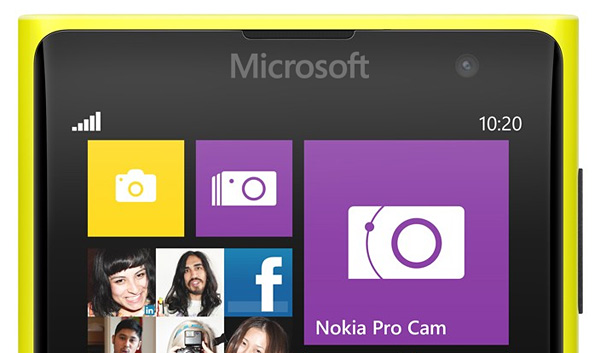
Lately, The Nokia brand has been phased out by calling the phones just "Lumia" and redirecting Nokia online properties to Microsoft.com. This rebranding effort will expand and soon the lineup will become "Microsoft Lumia".
Lumia is already the de facto face of Windows Phone it accounts for about 90% of the market. Microsoft has been busy signing up new vendors but they will struggle to gain significant market share as the big names have mostly neglected WP.

Flight authorities had started to show concern regarding the use of the Note 7 by passengers while onboard ever since it was proved beyond doubt that a very rare number of the smartphones do indeed at times, explode! Cebu Pacific Air has now officially banned the use of the smartphone on their flights. Keep in mind though that you can still carry it around with you, but as long as you switch it off and don't attempt to charge it. Here's the official statement.
"In light of the recent recall of Samsung Galaxy Note 7 devices due to safety issues, Cebu Pacific (CEB) advises passengers that the usage and charging of the device are prohibited onboard all CEB and Cebgo flights beginning today, September 11, 2016, until further notice..."
"Galaxy Note 7 devices must also not be stowed in checked baggage, but may be hand-carried as long as the device is turned off at all times inside the aircraft. We sincerely hope for our passengers' full cooperation, as the safety of everyone onboard our flights remains our utmost priority,"
The US Federal Aviation Administration is speaking along the same lines and the instructions are identical to what was stated by Cebu in the above excerpt. Judging by the fact that Samsung itself has requested all users around the globe to stop using the Note 7 and go to the service centre for an exchange that will be processed as soon as possible, it might be a good idea to heed to the warnings, if you have not already.
Saikat Kar (tech-enthusiast)

OpenSignal Inc. thrive on smartphone statistics and took the time to plot Android Brand fragmentation. It was a Huge undertaking as the dominant smartphone platform has splintered in many different ways.
First off is that Android devices are made by a myriad of manufacturers. Samsung was by far the biggest with 43% market share and 12 of the 13 most popular devices. Despite the domination, the company's market share has actually slipped, last year it had 47.5% of the market.
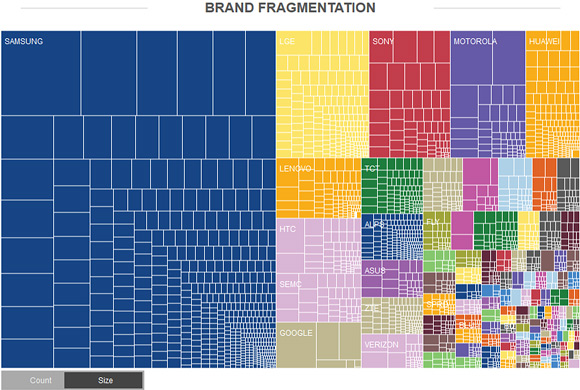
Sony comes in a distant second with 4.8% market share. There's a large number of old Sony devices out there, some dating from the Sony Ericsson days. LG and Motorola also have decently-sized shares. Huawei and Lenovo are doing okay too, keep in mind new Motorolas will soon be counted towards Lenovo's share.

The Galaxy C10 Plus is an upcoming device that will probably be limited to certain markets only, just like the rest of the smartphones in the C-series. Nevertheless, the C-series has been quite impressive lately and the C10 Plus doesn't seem to be an exception to that either. Although we don't have a score for you unfortunately, the screenshot you see below does reveals quite a few of the details regarding the internals of the Galaxy C10 Plus.
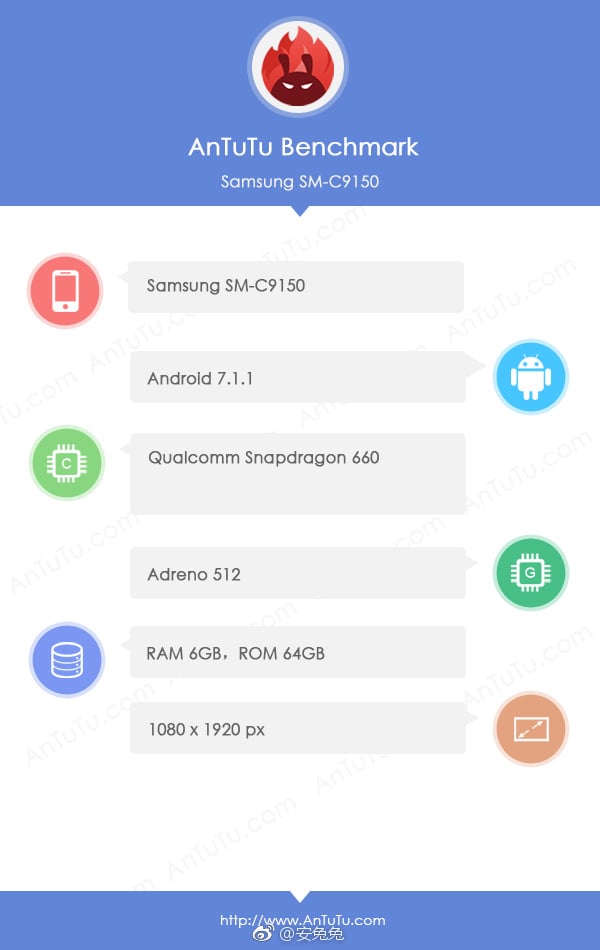
Display: 1080p Super AMOLED (possibly at more than 6-inches)
CPU: Qualcomm Snapdragon 660 processor
GPU: Adreno 512
RAM: 6GB
Internal Storage: 64GB
OS version: Nougat 7.1
If this leak is indeed not fake (which it doesn't seem to be), then we know only one thing for sure about the device's released cycle; China is going to be the first country to get it. India could be on the list too, but we will have to wait and see about that one. Would you buy the Galaxy C10 Plus if it became available near you? How much Would you pay for it?
Saikat Kar (tech-enthusiast)
Samsung's Galaxy S9 and S9+ handsets are almost on the verge of being released now, but surprisingly enough, we have not yet seen too many live images of the two devices yet; something that has not happened in the recent past. While not having enough leaks is not Samsung's problem, they have indeed just released brand new teaser videos in South Korea. If you have not checked the three teasers out yet, feel free to do so now.
All the teasers are 15-seconds long and as we expected, doesn't really show us much at all. However, there is a little hint regarding the animated 3D emojis (aka Apple's Animojis) about which ETNews reported just yesterday. Also, the low light capabilities of the f/1.5 aperture on one of the S9+'s camera seems to be the focus in one of the ads. It's all marketing though as we don't really see the real device. What do you see in the teasers? Did we miss anything obvious? Let us know in the comments if you see anything new.
Saikat Kar (tech-enthusiast)
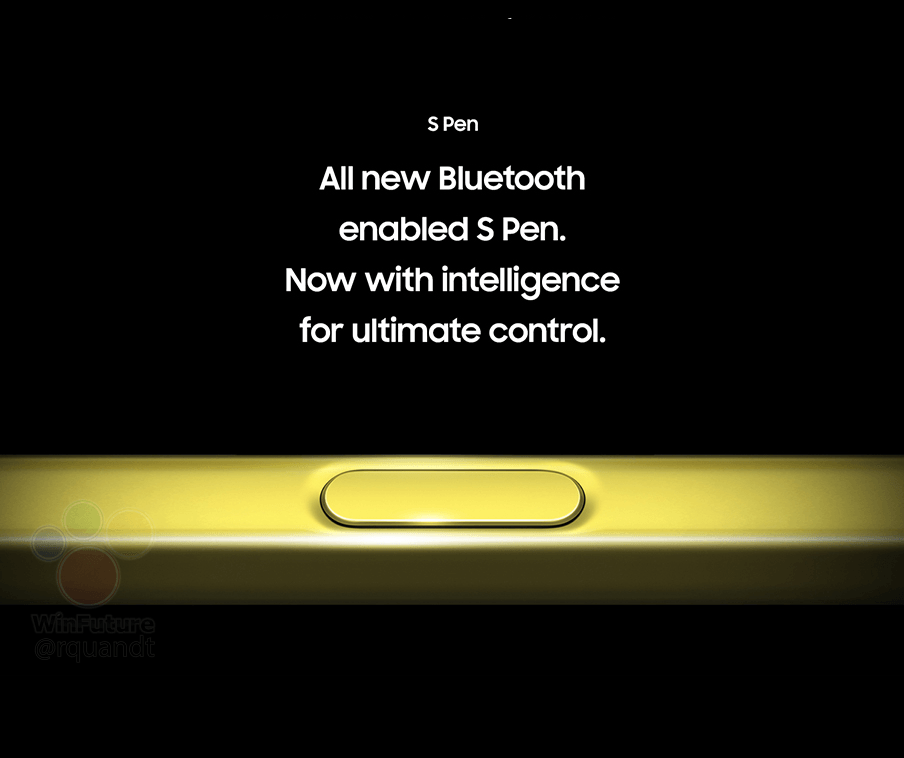
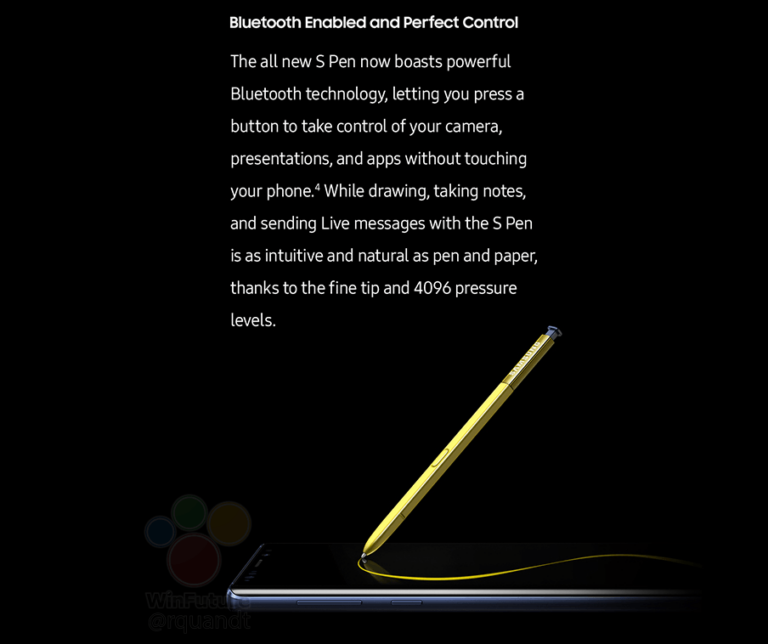
New leaked marketing material from Samsung confirms that the Galaxy Note 9 is indeed coming in with a load of new features. Apparently, the images you are seeing here was supposed to be unveiled only at the presentation on August 9, but somehow, they are here for us right now. We are not sure whether this is good or bad for the company, but this leak does remove all the "unpacking" from the upcoming Samsung Unpacked!
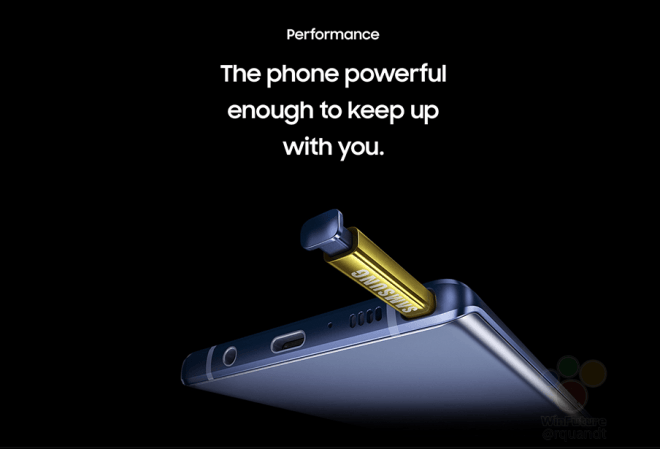
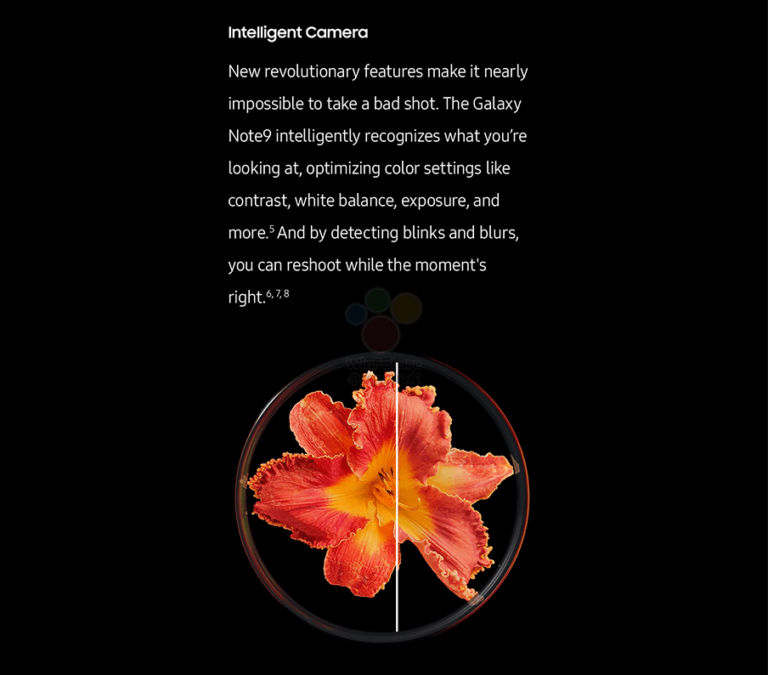
As you can see from the images themselves, AI integration will play a big role in the Galaxy Note 9's camera and even the Bluetooth-capable S-Pen with 4096 pressure points, since both will deliver better performance by learning and adjusting according to the situation. The dual pixel technology from the S9+ will be retained and to power all of this, Samsung is also putting in a 4,000mAh battery. Interestingly, the Dex feature is also going to be present this year on the Note 9 (just like the recently released Galaxy tab S4) and without the need for any additional hardware, except of course, the connecting cable. Now that all has been revealed, would you be buying the Galaxy Note 9?
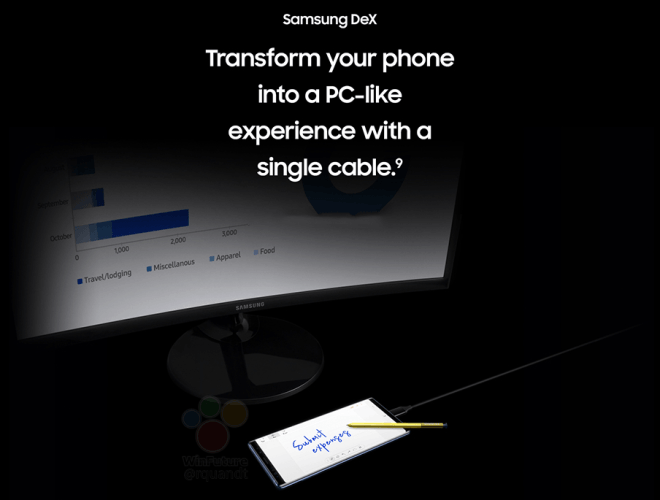
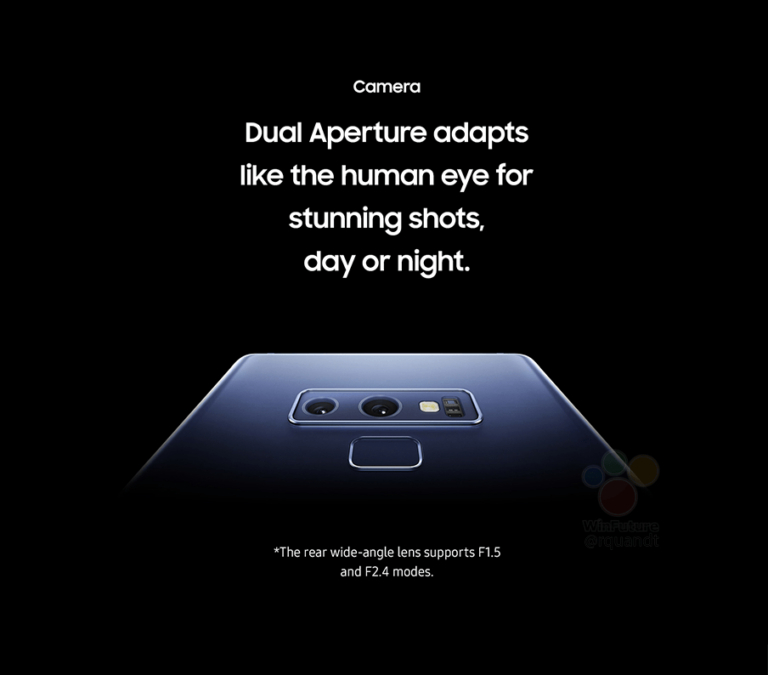
Saikat Kar
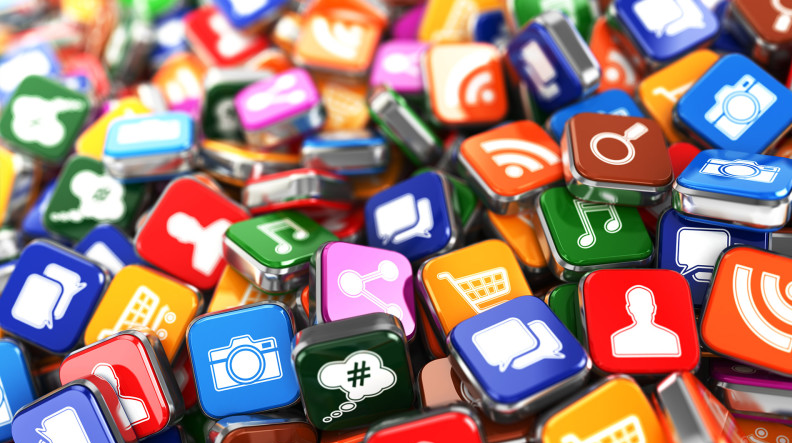
While the mobile app industry may be relatively new, it has grown at such an exponential rate that it is now one of the most expansive markets in the world. It is expected to reach a peak of $77 billion by the end of 2017, with everything from games to productivity apps available through the freemium business model that profits through option, in-app purchases.
This model is driven by volume rather than the profitability of individual apps, meaning that the market has grown thanks to minimal barriers to entry and the ability of developers to create thousands of diverse apps across Android and iOS. Interestingly, the relatively low-cost of app development and the ease with which tools can be conceived has encouraged numerous brands to create commercial apps, and there is evidence to suggest that this may offer businesses an advantage over their competitors.
So, why exactly should you look to develop a mobile app and use this as a direct marketing tool for your brand?
1. App Store Optimisation drives as ROI on your investment
If you have never heard of App Store Optimisation (ASO), this is a new process that enables businesses to use specific techniques which enhance the ranking of their branded application. Borrowing heavily from the concept of SEO, you can market your app based on a number of relevant and organic phrases, competing with rivals in order to thrive across multiple app stores. There are even a number of tools which can help to underpin your ASO campaign, which in turn helps you to measure and determine an accurate ROI.
2. Target new customers with a mobile app-install
If you ocassionally play online casino games you will note that the vast majority have a prominent mobile app which sits alongside their primary website. While the two offer a largely seamless experience and feature consistent branding, they can be considered as separate entities for the purpose of targeting specific demographics and players.
This makes perfect sense, especially as CRM software makes it easier than ever to understand demographics and target defined customer profiles. If you know which type of consumers are using your mobile app, it is easy to tailor your marketing efforts and optimise the impact of your efforts.
3. Create an additional revenue stream
Obviously, the nature of your app will depend on your brand and the products or services that it delivers, but regardless of this it can also have an impact beyond marketing. While it is always wise to make marketing applications available for free, you can incorporate in-app purchase options and tiers which have the potential to generate incremental income from loyal customers.
This is an opportunity that should never be ignored, as the combination of creating additional marketing reach while also boosting revenue delivers a diverse ROI that impacts on various aspects of your business.
© 2023 YouMobile Inc. All rights reserved






